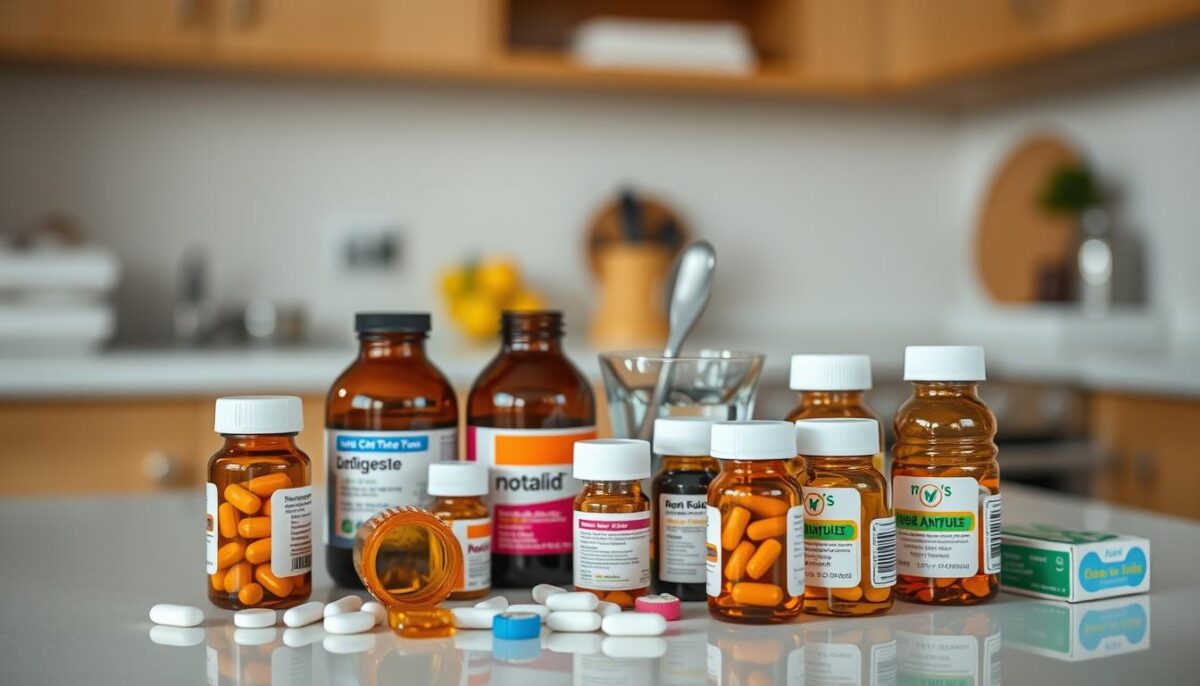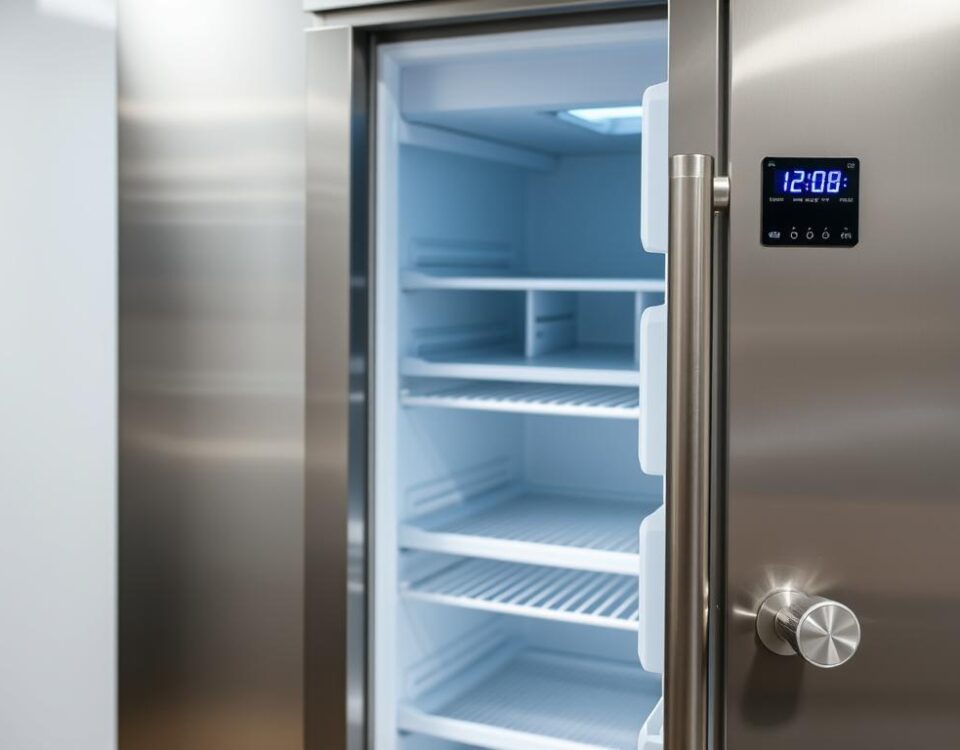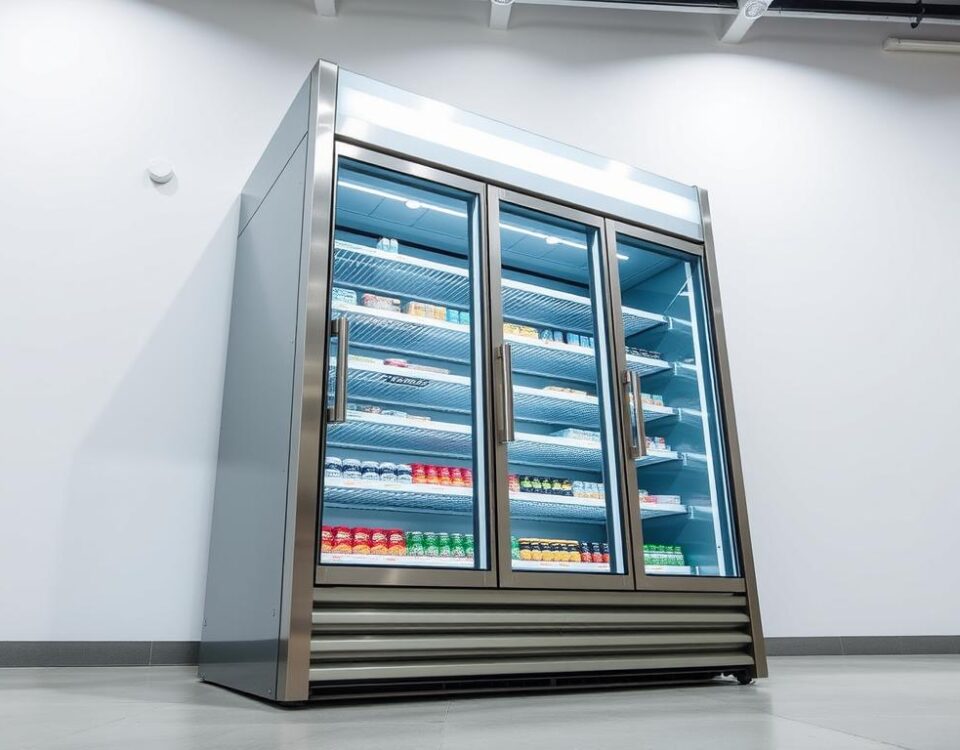
Soothing Soups and Light Meals That Aid Recovery
May 18, 2025
What to Eat When You Have a Sensitive Stomach
May 19, 2025Did you know that 1 in 5 Americans experience digestive discomfort requiring quick intervention each year? I’ve been there too—rummaging through my pantry during those urgent moments, hoping to find something soothing. What I’ve learned is that simple kitchen ingredients often hold the key to calming an upset stomach naturally.
When my system feels off, I lean on methods backed by Medical News Today and Verywell Health. Staying hydrated with water and drinks rich in electrolytes is crucial. Bland foods like bananas or toast (part of the BRAT diet) become my go-to, while probiotic-rich options like yogurt help restore gut balance. These aren’t just personal favorites—they’re science-approved strategies.
Through trial and error, I’ve discovered how everyday items can ease symptoms without harsh medications. Whether it’s sipping ginger tea or avoiding caffeine, small tweaks make a big difference. Let’s explore how to turn your kitchen into a wellness toolkit.
Key Takeaways
- Hydration with water and electrolyte-rich fluids is critical for recovery.
- The BRAT diet (bananas, rice, applesauce, toast) helps stabilize digestion.
- Probiotic foods like yogurt support gut health during recovery.
- Avoid caffeine, alcohol, and spicy foods to prevent irritation.
- Seek medical advice if symptoms persist beyond 48 hours or include fever.
Understanding Diarrhea and Its Impact
You’ve probably felt that sudden rush of discomfort signaling your digestive system is out of sync. For me, it often starts with cramping and frequent trips to the bathroom. These episodes usually involve loose or watery stools, sometimes paired with bloating or gas. Medical News Today notes common triggers like viral infections, food sensitivities, or bacterial imbalances.
Common Symptoms and Causes
When my stomach rebels, I watch for warning signs: abdominal pain, urgent bowel movements, or fatigue. While most cases resolve in a day or two, persistent symptoms—like fever or blood in stools—mean it’s time to call a doctor. I’ve learned that dehydration sneaks up fast, especially if fluids aren’t prioritized.
The Importance of Hydration in Recovery
Sipping water throughout the day became my non-negotiable rule after a bout with traveler’s illness. The NHS emphasizes replenishing lost electrolytes through broths or oral rehydration solutions. During recovery, I avoid caffeine and alcohol—they irritate the gut further. A balanced approach helps restore nutrients without overwhelming the system.
“Even mild dehydration can prolong recovery. Focus on small, frequent sips rather than large volumes.”
Trusting your body’s signals is key. If plain water feels insufficient, coconut water or herbal teas offer gentle hydration. Remember—listening to your stomach today means feeling stronger tomorrow.
Diarrhea Home Remedy Tips: Kitchen Staples Edition
I’ve found that the simplest ingredients often bring the quickest relief. When my digestive system feels fragile, I stick to basics that work without overwhelming my body. Let’s explore two strategies I rely on—gentle eating and clever pantry hacks.

Bland Diets and the BRAT Approach
Bananas became my best friend during a rough bout last summer. Their potassium helps replace lost electrolytes, while the pectin in applesauce soothes irritation. Plain white rice and toast act like sponges, absorbing excess fluid in the gut. Medical News Today confirms these foods reduce bowel movement frequency by firming stools.
I use the BRAT method for 24-48 hours max. It’s not a long-term fix, but it gives my system a reset. Pair it with sips of broth or diluted juice to maintain energy without upsetting the stomach.
Quick Remedies Using Everyday Ingredients
Ginger tea works wonders for cramping—I steep fresh slices in hot water with a pinch of salt. Chamomile’s anti-inflammatory properties ease discomfort, and a teaspoon of honey adds soothing sweetness. For quick electrolyte balance, I mix coconut water with a dash of sea salt.
Avoid dairy and greasy foods until things stabilize. Stick to small portions, chew thoroughly, and let your body guide you. Most times, these tweaks bring relief within a day. If not, it’s smart to consult a doctor.
“Bland diets reduce intestinal workload, allowing faster recovery.”
Natural Remedies from Your Pantry and Refrigerator
When my stomach feels unsettled, I reach for ingredients I already have on hand. Herbal infusions became my secret weapon after discovering their gentle yet effective benefits. Let’s explore how these pantry staples can calm digestive storms.
Herbal Teas and Natural Infusions
Chamomile tea is my first choice for cramping. Studies in Phytotherapy Research show its anti-inflammatory compounds relax intestinal muscles. I steep two tea bags in hot water for 10 minutes—stronger brews work faster.
Green tea’s catechins help combat harmful bacteria, according to Healthline. I add a pinch of salt to replenish electrolytes while sipping. Lemongrass infusions are another favorite—their citrusy aroma eases nausea naturally.
“Herbal teas provide hydration and bioactive compounds that synergistically support gut recovery.”
Always use fresh leaves or quality tea bags. Let mixtures cool slightly to avoid irritating sensitive tissues. Pair these drinks with bland foods for balanced relief.
These infusions replace lost fluids while delivering healing properties. They’re not magic cures, but they’ve helped me avoid harsh medications during mild episodes. Give them a try next time your system needs kindness.
Modifying Your Diet to Manage Diarrhea
Rebuilding my eating habits after digestive upset taught me patience and precision. It’s not just about what you remove—it’s about strategically adding nutrients back in. Healthline recommends reintroducing items slowly to avoid overwhelming your system.

Foods to Reintroduce Gradually
After 24 hours on the BRAT diet, I test gentle additions like oatmeal or steamed carrots. Plain crackers and skinless baked potatoes became my next-phase staples. These low-fiber options give energy without taxing my stomach.
Boiled eggs and lean chicken breast work well once I tolerate basics. I eat small portions every 2-3 hours, chewing thoroughly. Hydration remains critical—herbal teas or diluted apple juice complement meals.
Foods to Strictly Avoid
Spicy sauces and fried foods stay off my plate for at least five days. Dairy products often backfire, even if I usually handle them. The Mayo Clinic warns against caffeine and artificial sweeteners, which can trigger renewed discomfort.
“Reintroduce fiber-rich foods last. Start with cooked vegetables before raw salads.”
I keep a food journal to spot patterns. For example, tomatoes caused setbacks despite being “healthy.” Now, I prioritize blandness until my gut signals readiness. This method cuts recovery time by half in most cases.
Over-the-Counter Solutions and Home Treatments
While kitchen staples often help me manage mild digestive discomfort, I’ve learned to keep trusted pharmacy options on hand for tougher days. Knowing when to use them—and when to pause—makes all the difference in recovery.

Effective Medications and Safe Usage
I only reach for loperamide (Imodium) when absolutely necessary—like during work meetings or travel. It slows bowel movements temporarily, but I follow dosage instructions meticulously. FDA guidelines recommend stopping use if symptoms persist beyond 48 hours.
For cramping, bismuth subsalicylate (Pepto-Bismol) soothes my stomach within 30 minutes. I avoid taking it with aspirin or other NSAIDs to prevent interactions. Always check labels: some products worsen dehydration if misused.
“OTC medications treat symptoms, not underlying causes. They’re tools, not cures.”
When to Seek Professional Advice
Three signs always send me to my doctor: fever above 102°F, blood in stools, or dizziness indicating severe fluid loss. Last winter, persistent pain led to discovering a bacterial infection needing antibiotics.
Children and older adults require extra vigilance. If symptoms return after initial improvement, I schedule an appointment rather than guessing. Our bodies speak clearly—we just need to listen.
Conclusion
Your kitchen holds more power than you might realize when your body needs care. Through trial and error, I’ve learned that hydration comes first—sipping water with electrolytes or herbal teas helps replenish what’s lost. Pairing this with easy-to-digest foods like bananas or plain rice gives your system time to reset without strain.
Remember, progress happens step by step. After the initial recovery phase, slowly reintroduce foods like oatmeal or steamed veggies. Listen closely to how your body responds—it’s better to wait an extra day than trigger setbacks.
While these strategies often bring relief within 48 hours, don’t hesitate to contact a healthcare provider if symptoms escalate. Fever or dizziness means it’s time to seek expert guidance.
Trust that small, consistent actions make a big difference. These approaches have helped me regain balance countless times, and they might work for you too. Stay patient, stay hydrated, and know when to ask for support—you’ve got this!
FAQ
What’s the fastest way to stop loose stools using kitchen ingredients?
I rely on the BRAT diet—bananas, rice, applesauce, and toast. These bland foods are gentle on my gut and help bind stools. Adding a pinch of salt to boiled rice water also replenishes lost electrolytes.
Can herbal teas really ease stomach discomfort?
Absolutely! I swear by ginger or peppermint tea. Both soothe cramps and reduce bloating. Chamomile is another favorite—it calms my digestive system and fights inflammation naturally.
Why should I avoid dairy during bowel issues?
Dairy products like milk or cheese can worsen symptoms since temporary lactose intolerance often occurs. I stick to lactose-free options or probiotic-rich yogurt once I’m recovering.
How do I know if I’m dehydrated?
Watch for dry mouth, dizziness, or dark urine. I sip oral rehydration solutions (like Pedialyte) or mix water with a teaspoon of sugar and salt to restore fluids and minerals effectively.
Are over-the-counter meds safe for quick relief?
Medications like loperamide (Imodium) work well for adults, but I avoid them if there’s blood in my stool or fever. Always check with a healthcare provider if symptoms last over 48 hours.
What foods trigger worse cramps and gas?
I steer clear of caffeine, alcohol, and greasy foods—they irritate the gut. Raw veggies, beans, and artificial sweeteners also ramp up bloating, so I reintroduce them slowly after recovery.
When should I call a doctor about digestive troubles?
If I notice severe pain, high fever, or bloody stools, I seek help immediately. Persistent issues lasting more than two days—especially in kids or older adults—need professional evaluation.



